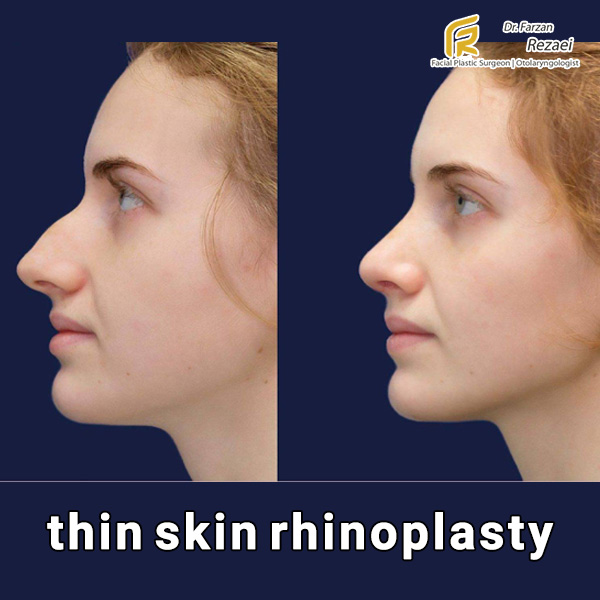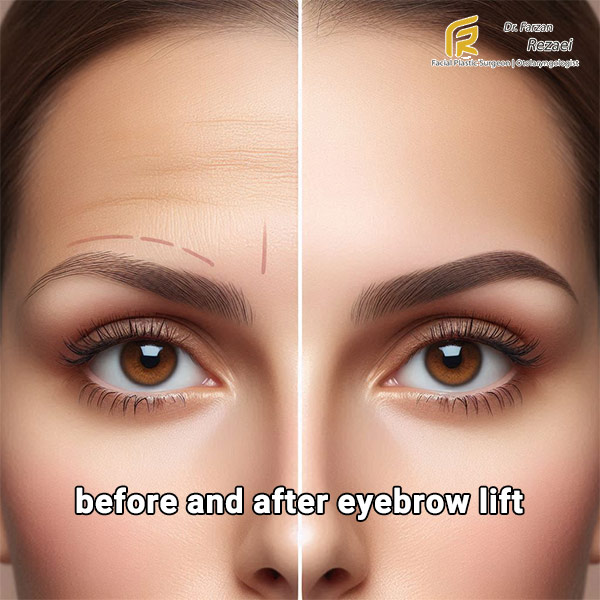Thin skin rhinoplasty
In the realm of cosmetic surgery, rhinoplasty stands as one of the most sought-after procedures globally. However, not all rhinoplasties are created equal. For individuals with thin skin, the conventional approach may not yield optimal results. Enter thin skin rhinoplasty, a specialized technique tailored to address the unique challenges posed by thin skin. In this article, we delve into the intricacies of this surgery , exploring its nuances, benefits, and considerations.

Understanding Thin Skin Rhinoplasty
Thin skin rhinoplasty, also known as thin-skinned nose surgery, is a refined surgical technique designed specifically for individuals with thin skin on their nasal structures. Unlike traditional rhinoplasty, which involves altering the underlying cartilage and bone, thin skin rhinoplasty focuses on enhancing the external appearance of the nose while minimizing the risk of visible irregularities or imperfections.
The Challenges of Thin Skin Rhinoplasty
Thin skin presents unique challenges in rhinoplasty due to its inherent lack of elasticity and thickness. Unlike thicker skin, which can camouflage minor irregularities, thin skin tends to conform closely to the underlying nasal framework, making any alterations more apparent. Moreover, thin skin is more prone to scarring and prolonged swelling, further complicating the post-operative healing process.
The Approach
In thin skin rhinoplasty, meticulous attention to detail is paramount. Surgeons employ advanced techniques to achieve natural-looking results while preserving the delicate nature of the skin. One such technique involves precise cartilage grafting to provide structural support and ensure long-term stability. Additionally, specialized suturing methods and tissue manipulation are employed to minimize the risk of visible scarring and optimize skin contouring.
Benefits of thin skin rhinoplasty
Enhanced Precision: Thin skin rhinoplasty allows for greater precision in reshaping the nasal structures, resulting in refined aesthetic outcomes.
Reduced Risk of Irregularities: By carefully sculpting the underlying cartilage and employing tailored techniques, surgeons can minimize the risk of visible irregularities or deformities.
Natural-Looking Results: Thin skin rhinoplasty aims to achieve harmonious facial proportions while maintaining the natural contours of the nose, ensuring results that blend seamlessly with the patient’s overall appearance.
Improved Healing: With its focus on gentle tissue handling and meticulous surgical techniques, this procedure promotes faster healing and reduced post-operative swelling, leading to a smoother recovery process.
Long-Term Satisfaction: Patients undergoing thin skin rhinoplasty often report high levels of satisfaction with their results, enjoying improved nasal aesthetics and enhanced self-confidence.
how you should eat in thin skin rhinoplasty aftercare ?
After undergoing thin skin rhinoplasty, proper nutrition plays a crucial role in supporting the healing process and optimizing recovery. Here are some dietary guidelines to follow during the aftercare period:
Stay Hydrated: Adequate hydration is essential for optimal healing. Drink plenty of water throughout the day to maintain hydration levels and promote tissue repair.
Focus on Whole Foods: Emphasize whole, nutrient-rich foods in your diet, including fruits, vegetables, lean proteins, whole grains, and healthy fats. These foods provide essential vitamins, minerals, and antioxidants necessary for tissue regeneration and immune function.
Incorporate Protein: Protein is essential for tissue repair and wound healing. Include lean sources of protein such as chicken, fish, turkey, tofu, legumes, and low-fat dairy in your meals to support the rebuilding of nasal tissues.
Consume Anti-inflammatory Foods: Certain foods possess anti-inflammatory properties that can help reduce swelling and inflammation associated with rhinoplasty. Include foods rich in omega-3 fatty acids (such as salmon, walnuts, and flaxseeds), turmeric, ginger, green tea, and colorful fruits and vegetables to help minimize post-operative swelling and discomfort.
Limit Sodium Intake: Excessive sodium consumption can contribute to fluid retention and swelling. Avoid high-sodium processed foods, fast food, and salty snacks, and instead opt for freshly prepared meals seasoned with herbs, spices, and natural flavorings.
Avoid Alcohol and Caffeine: Both alcohol and caffeine can have dehydrating effects on the body, which may hinder the healing process. Limit your intake of alcoholic beverages and caffeinated drinks during the recovery period.
Eat Small, Frequent Meals: To avoid putting unnecessary strain on your nasal area, opt for small, frequent meals throughout the day rather than large, heavy meals. This can also help prevent nausea or discomfort, especially in the immediate post-operative period.
Follow Surgeon’s Recommendations: Your plastic surgeon will provide specific dietary guidelines based on your individual needs and the extent of your surgery. Follow their recommendations closely and consult with them if you have any questions or concerns about your diet during the aftercare period.
By prioritizing nutrient-dense foods, staying hydrated, and following your surgeon’s recommendations, you can support the healing process and achieve optimal results following thin skin rhinoplasty.
Considerations
While this surgery offers numerous benefits, it’s essential to consider certain factors before undergoing the procedure. Patients with thin skin may experience prolonged swelling and require additional time for complete healing. Furthermore, realistic expectations are crucial, as thin skin may not conceal minor imperfections as effectively as thicker skin types. Consulting with a board-certified plastic surgeon experienced in this surgery is essential to ensure a thorough evaluation and personalized treatment plan.
How Skin Type Influences Surgical Procedures
Your skin type plays a crucial role in cosmetic surgeries, affecting the techniques employed and the outcomes achieved. Here’s how:
Thick Skin and Cartilage Grafts: In individuals with thicker skin undergoing rhinoplasty, surgeons frequently utilize cartilage grafts to bolster the nasal skeletal framework. This reinforcement is vital for attaining symmetry and aesthetic balance.
Thin Skin and Surgical Precision: Conversely, for those with thinner skin, surgical interventions demand heightened precision. Surgeons must meticulously craft the new nasal contour to ensure optimal adaptation to the delicate skin, enhancing the final result.
Considering Skin Quality
The quality of your skin is another critical aspect to ponder. Elements such as sun exposure and skin type can exert an influence on both the surgical result and the postoperative healing phase.
Thick Skin and Oily Skin: Thicker nasal skin frequently coincides with oily skin tendencies, which can complicate the healing journey. Employing precise plastic surgery methods becomes imperative to safeguard tissue health and achieve the desired outcome.
Thin Skin and Sun Damage: Conversely, thinner skin is often prone to sun damage, amplifying its impact on the recovery process. Taking additional measures becomes essential to facilitate a seamless recuperation process.
How Does Skin Type Influence Surgical Procedures?
Your skin type plays a crucial role in determining the course of a cosmetic surgery. Thicker skin may necessitate the incorporation of extra cartilage, whereas thinner skin may not require such measures.
Thick Skin and Cartilage Grafts
In individuals with thicker skin undergoing rhinoplasty, cartilage grafts are frequently utilized to augment the nasal skeletal framework. This is indispensable in achieving symmetry and proportionality.
Thin Skin and Surgical Precision
For patients with thin skin, surgical procedures demand meticulous attention to detail. Surgeons must exercise precision to ensure optimal integration of the thinner skin with the altered nasal structure.
How to Select the Ideal Surgeon?
Selecting a board-certified plastic surgeon or facial plastic surgeon specializing in rhinoplasty is paramount. A proficient surgeon will assess your skin type and customize surgical techniques accordingly.
Experience Counts
Seek out a rhinoplasty expert with a demonstrable history of successfully treating patients with both thick and thin skin. Their expertise will significantly impact the final result.
Consultation is Vital
A comprehensive consultation enables the surgeon to analyze your skin type, nasal structure, and other pertinent factors influencing the outcome. This is your opportunity to pose questions and resolve any uncertainties.
In summary, whether you possess thick or thin skin can markedly influence the results of your rhinoplasty. Each scenario presents unique advantages and challenges, and the appropriate surgical approach can make a world of difference. If you’re contemplating nasal surgery, scheduling a consultation with Dr. Panossian can furnish you with personalized guidance tailored to your specific requirements.
Conclusion
Thin skin rhinoplasty represents a tailored approach to nasal reshaping, offering individuals with thin skin the opportunity to achieve harmonious facial aesthetics with natural-looking results. By addressing the unique challenges posed by thin skin and employing advanced surgical techniques, thin skin rhinoplasty opens new possibilities for facial enhancement while prioritizing patient safety and satisfaction. For those considering rhinoplasty with thin skin, consulting with a qualified plastic surgeon is the first step towards realizing their aesthetic goals and embracing newfound confidence.




